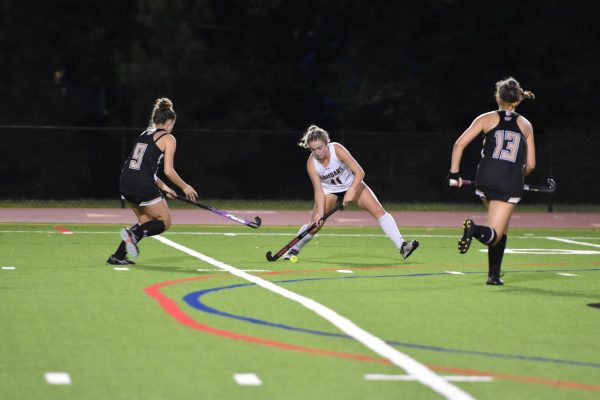How to handle the seven hour school day
There are ways to balance classwork with homework, and nerves with social interaction.
The seven hour school day has long been the subject of debate, and prior to COVID-19 we had probably exhausted the arguments on both sides. But we find ourselves in new waters this year, and the question must be asked again, does a seven hour school day make sense?
The answer is yes. The last thing any of us need right now is more isolation. However, a seven hour online school day poses several problems, as anyone attending Oakton right now is likely to tell you.
A couple of issues:
Many people are taking tests asynchronously. Take home tests were near unheard of in the pre-Coronavirus world, but now that we’re online, teachers see no reason to spend class time administering exams that they can’t monitor anyway. While this makes sense, the time required for students to take those tests outside of class doesn’t seem to be factoring into homework assignments. According to the FCPS website, “homework across disciplines should not exceed…2 hours at the high school level.” Even without at-home assessments, this goal is rarely met. With quizzes and tests as homework, it doesn’t stand a chance.
There is less time in class to work on individual assignments. Teachers are understandably hesitant to set students free to work when there is no way to ensure that they’re actually working. However, this concern must be balanced with the fact that any time not given in class is time students must spend working outside of class. The load is starting to feel unmanageable for many, which is especially frustrating for those students who would use class time to work.
There isn’t enough social interaction. The district went to great lengths to create a system by which we could all be together online, but it is squandered if teachers spend the entire class sharing their PowerPoint lectures, or if students won’t turn on their mics to engage with the material.
Some solutions:
The breakout room tool on Blackboard Collaborate is vital. Breakout rooms are useful for two reasons; first, they allow teachers to circulate through different groups to see if students are working productively or if they need help. This mitigates many of the concerns about allocating class time for individual work. Second, breakout rooms allow students to talk to their peers freely, and discuss course content or have personal conversations without the audience of the entire class. In short, breakout rooms are the best way to simulate what school is like in-person.
Teachers can also set immediate time limits on in-class work. Making clear that an in-class assignment will be marked late if it’s not turned in by the end of the period makes it very likely that students will use class time to work, and ensures that students aren’t spending too long on assignments that shouldn’t require several hours. It’s also a way to take tests online.
Participation points should also be instated. Making class conversation via mic or chat a graded requirement will both motivate students to engage and make for another entry in the gradebook that can be achieved in-class, rather than through homework.
Success:
This is a new challenge for all of us, and it will take time to perfect the system. Still, some students and teachers are finding success. Sarah Driessen (10) says that she’s taking tests in class and that “teachers this year are more considerate of our time than they usually are.” Reagan O’Brien (11) says that doing warmups “create[s] a lot more interaction between students.” She doesn’t think teachers are “overloading us with work because we’re online and because they think we have more time.”
As we navigate distance learning, open communication between administrators, teachers, and students will allow us to find the best practices possible. This is a strong community of people who want to learn, and there’s no doubt that we will find a way. Stay healthy, everyone.









